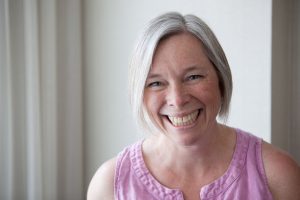
What does it really mean to be an instructional leader?
Ever since I was in graduate school, studying to become a principal, this was the lingo of the great leader—be an instructional leader. At first I thought this meant I had to be the best teacher in the building, and when I walked into classrooms, I might show a teacher a few moves. But every time I went into a classroom that was “someone else’s classroom” (who, by the way, I was also in charge of evaluating), getting up and interrupting the teacher’s lesson with my own brilliant ideas never seemed like the right move. Over the next eight years, I often wondered whether I was being an instructional leader. If this is the gold standard of being a principal, of course that is what I was aiming for, but how was I to know if I had gotten there?
I am discovering that being an instructional leader is NOT about being the best teacher in the building but about being a leader who is unendingly engaged in thinking about how children learn. I have the greatest impact as an instructional leader when I am curious, asking questions about how children learn. Perhaps being an instructional leader is not about knowing it all, but is about wondering.
As the principal of the Cambridgeport School, I have always been a literacy leader. Teachers know I was a literacy coach and often come to me with questions, wonderings, and observations about literacy teaching. During my first year as the principal, I brought the staff together throughout the year to ask questions about our writing instruction. What do we think high-quality work looks like in second grade, and how does this lay the foundation for high-quality writing in fifth grade? I asked questions about how children use the resources in front of them. I asked questions about how teachers were conferring with children. It seemed that each question I asked led to deep, important conversations and ultimately to teachers reflecting on and adjusting their practice.
But this level of deep thinking and questioning about how children learn best was not present in our conversations about math.
The conversations about math teaching and the questions I was asking were about compliance—are we using the right curriculum? Are we on the right pace? Are our students doing well enough on the assessments? Occasionally someone might get excited about exploring an actual math teaching practice—maybe how to engage students in problem solving—but this didn’t last. I didn’t support it as the instructional leader in the school. I had never put children’s joy, enthusiasm, and agency in math at the front and center of my work, so it is no wonder teachers in my school hadn’t either.
In my first year as a Heinemann Fellow, I designed an action research plan alongside a third-grade teacher. My goal in the plan was to encourage our students to be engaged, enthusiastic, self-directed mathematicians. Working side by side with a teacher helped me see the kinds of questions I wanted to be asking all teachers about math instruction in their classrooms. What are the big ideas in this unit? What games might reinforce these ideas? What are the different ways to model these ideas with manipulatives? What choices might we provide to allow students to engage with these big ideas? If we listen in on student conversations while they do math, which students are doing the heavy thinking work? How do we get all students doing this heavy thinking work? My work with this teacher and the questions I began to ask of other teachers seemed to inspire teachers across the school to take a closer look at their math teaching practices.
By the end of my first year as a Fellow, we had not really moved the needle significantly on the achievement and agency of the third graders in the classroom I was teaching (and we certainly came away with some new things to try). However, over three-quarters of the teachers in the school reported in a survey at the end of the year that they were more enthusiastic about teaching math than they had been in the past. Might this have had something to do with the kinds of questions that I, as an instructional leader, had been asking?
 I am an asker of questions. It’s what I do best. I can’t turn it off. So I need to make sure the questions I am asking move the work forward in my school. Last year I started asking, “how do we, as a school, shift our thinking about math so that teachers and children can become joyful, enthusiastic, lifelong mathematicians?” And just asking that question in every aspect of what I do seems to be making a difference. We have an instructional leadership team that meets twice a month—this question has been the foundation of all our work this past year. We have an annual math night for families and children—this is another place to ask that question. Is the math at math night truly joyful? Does it sustain enthusiasm within children so they want to do more of it at home with their families? When we look carefully at assessment data, and find that some students need more support in learning math concepts, I ask,how do we do this in a way that does not take away agency and allows these children to still be enthusiastic mathematicians?
I am an asker of questions. It’s what I do best. I can’t turn it off. So I need to make sure the questions I am asking move the work forward in my school. Last year I started asking, “how do we, as a school, shift our thinking about math so that teachers and children can become joyful, enthusiastic, lifelong mathematicians?” And just asking that question in every aspect of what I do seems to be making a difference. We have an instructional leadership team that meets twice a month—this question has been the foundation of all our work this past year. We have an annual math night for families and children—this is another place to ask that question. Is the math at math night truly joyful? Does it sustain enthusiasm within children so they want to do more of it at home with their families? When we look carefully at assessment data, and find that some students need more support in learning math concepts, I ask,how do we do this in a way that does not take away agency and allows these children to still be enthusiastic mathematicians?
This year I will explore my own questions in a more intentional way. I will look at each move I make with teachers and each question I ask about their math instruction to see how these very interactions can shift how teachers in the school think about math and, thus, how our children think about and engage with mathematical ideas. I no longer think being an instructional leader really has anything to do with being “the best teacher.” Rather, it’s about being deeply curious about teaching and learning and bringing that curiosity to work every day in order to ask questions that shift teaching and learning.
 Katie Charner-Laird is principal at Cambridgeport School in Cambridge, Massachusetts. Katie views her role as an instructional leader, spending large amounts of time in the classroom because “There is no perfect lesson. There is only a lesson that perfectly matches the needs of the students.” Recently, Katie has worked to create an approach for teachers to be in one another’s classrooms, engaging in what her school calls “collaborative observation.”
Katie Charner-Laird is principal at Cambridgeport School in Cambridge, Massachusetts. Katie views her role as an instructional leader, spending large amounts of time in the classroom because “There is no perfect lesson. There is only a lesson that perfectly matches the needs of the students.” Recently, Katie has worked to create an approach for teachers to be in one another’s classrooms, engaging in what her school calls “collaborative observation.”


